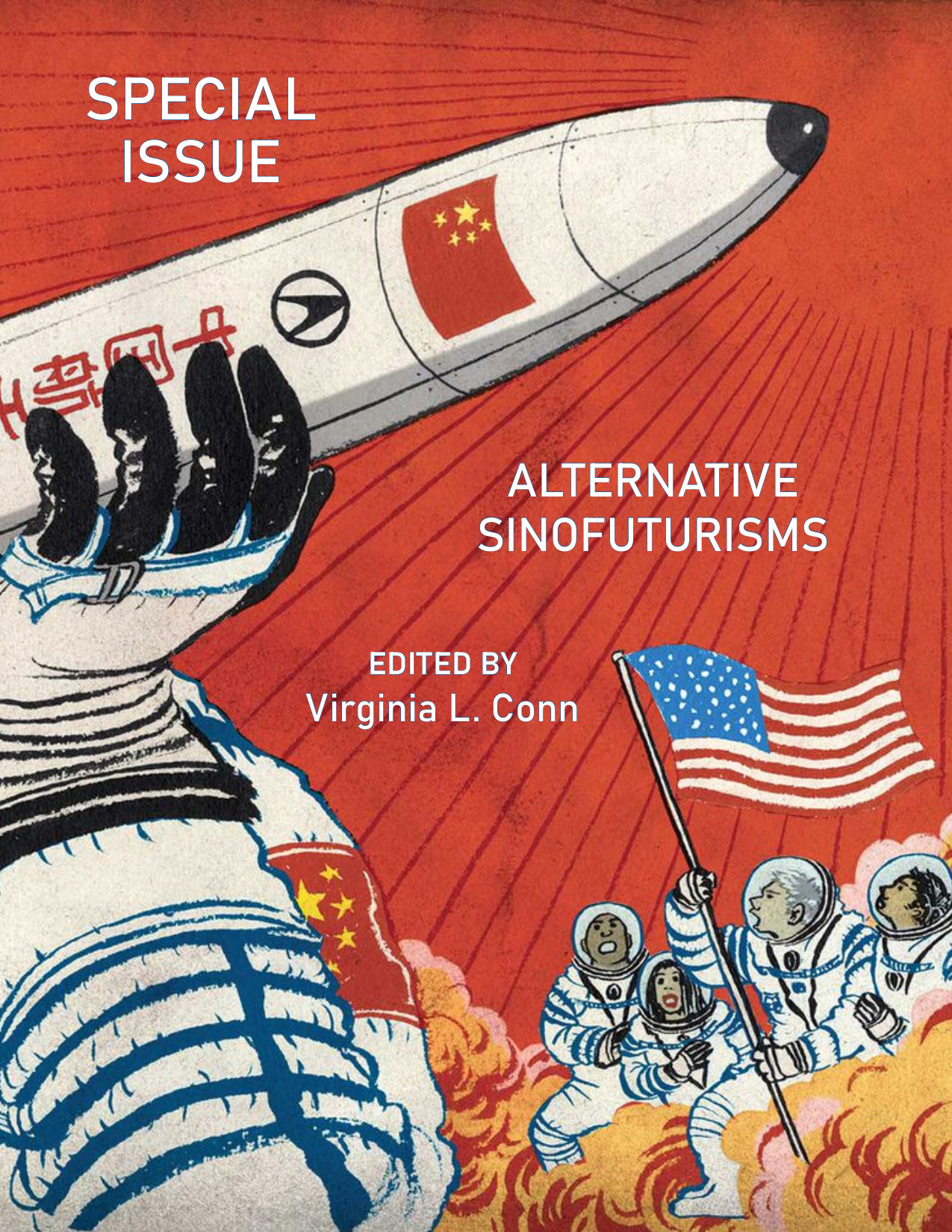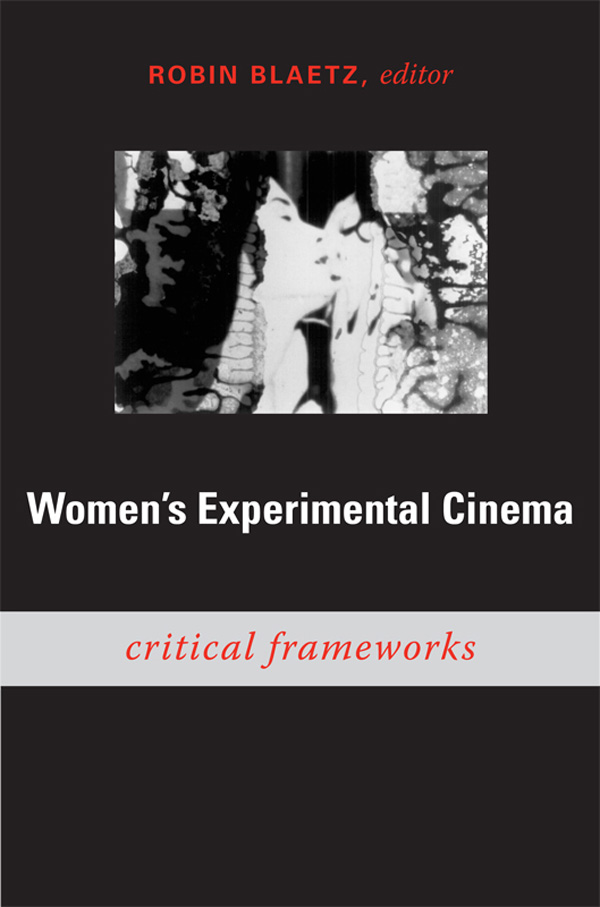SFRA Review, 50(2-3): Alternative Sinofuturisms (2020)
Filed under journal | Tags: · china, futurism, literary criticism, literature, science fiction, sinofuturism, technology

“The idea for this special issue developed out of a workshop organized by Dino Ge Zhang as part of the WuDaoKou Futurists collective, a collective aimed at decentering Sinofuturism from its Western articulations. The workshop, “Alternative Sinofuturisms,” already presupposes Sinofuturism as a venue for alterity and retains a space for various approaches and understandings of who and what is being foregrounded. Centralized in Beijing but held online with invited speakers from four different continents, the workshop was organized around a series of provocations, most of which are included in this issue.”
Contributors: Loïc Aloisio and Gwennaël Gaffric, Virginia L. Conn, Gabriele de Seta, Margaret A. Fisher, Carmen Herold, Amy Ireland, Lyu Guangzhao, Astrid Møller-Olsen, Yen Ooi, Frederike Schneider-Vielsäcker, Molly Silk, Mitchell van Vuren, Dino Ge Zhang.
Edited by Virginia L. Conn
Publisher Science Fiction Research Association, Spring-Summer 2020
Creative Commons BY-NC-ND 4.0 License
ISSN 2641-2837
pages 66-181
Robin Blaetz (ed.): Women’s Experimental Cinema: Critical Frameworks (2007)
Filed under book | Tags: · avant-garde, body, cinema, experimental film, feminism, film, film criticism, film history, women

“Women’s Experimental Cinema provides lively introductions to the work of fifteen avant-garde women filmmakers, some of whom worked as early as the 1950s and many of whom are still working today. In each essay in this collection, a leading film scholar considers a single filmmaker, supplying biographical information, analyzing various influences on her work, examining the development of her corpus, and interpreting a significant number of individual films. The essays rescue the work of critically neglected but influential women filmmakers for teaching, further study, and, hopefully, restoration and preservation. Just as importantly, they enrich the understanding of feminism in cinema and expand the terrain of film history.
The contributors examine the work of Marie Menken, Joyce Wieland, Gunvor Nelson, Yvonne Rainer, Carolee Schneemann, Barbara Rubin, Amy Greenfield, Barbara Hammer, Chick Strand, Marjorie Keller, Leslie Thornton, Abigail Child, Peggy Ahwesh, Su Friedrich, and Cheryl Dunye. The essays highlight the diversity in these filmmakers’ forms and methods, covering topics such as how Menken used film as a way to rethink the transition from abstract expressionism to Pop Art in the 1950s and 1960s, how Rubin both objectified the body and investigated the filmic apparatus that enabled that objectification in her film Christmas on Earth (1963), and how Dunye uses film to explore her own identity as a black lesbian artist. At the same time, the essays reveal commonalities, including a tendency toward documentary rather than fiction and a commitment to nonhierarchical, collaborative production practices. The volume’s final essay focuses explicitly on teaching women’s experimental films, addressing logistical concerns (how to acquire the films and secure proper viewing spaces) and extending the range of the book by suggesting alternative films for classroom use.”
Contributors: Paul Arthur, Robin Blaetz, Noël Carroll, Janet Cutler, Mary Ann Doane, Robert A. Haller, Chris Holmlund, Chuck Kleinhans, Scott MacDonald, Kathleen McHugh, Ara Osterweil, Maria Pramaggiore, Melissa Ragona, Kathryn Ramey, M. M. Serra, Maureen Turim, William C. Wees.
Publisher Duke University Press, Durham, NC, 2007
Open access
ISBN 9780822340232, 0822340232
viii+421 pages
Reviews: Harriet Margolis (NWSA Journal, 2009), Beth Hutchison (Signs, 2009), Gwendolyn Audrey Foster (Quarterly Review of Film and Video, 2011), Jan-Christopher Horak (Screening the Past, 2008), David Sterritt (Cineaste, 2008), Phoebe Hart (M/C Reviews, 2008).
Comment (0)Steina: Machine Vision (1978–)
Filed under video | Tags: · art, environment, installation, installation art, kinetic art, media art, op art, video, video art, vision
An electro-opto-mechanical environment by Steina, with instrumentation by Josef Krames, Woody Vasulka, and Bruce Hamilton. First shown at the Vasulkas exhibition at Albright-Knox Art Gallery in Buffalo, NY, 1978.
“When a human being operates the camera, the assumption is that the camera is an extension of the eye. You move the camera the way you move the head and the body. In video, unlike photography or film, the viewfinder is not necessarily an integral part of the camera apparatus. … In the late 1970s, I began a series of environments titled Machine Vision and Allvision, with a mirrored sphere. Another variation has a motorized moving mirror in front of the camera so that depending on the horizontal or vertical positioning of the mirror, the video monitor displays a continuous pan or tilt either back/forth or up/down. A third variation is a continuous rotation through a turning prism, while still another has a zoom lens in continuing motion, in/out. These automatic motions simulate all possible camera movements freeing the human eye from being the central point of the universe.” (Steina)
Recorded at the Palazzo delle Esposizioni, Rome, 1994/1995
Artist statement and documentation (artist’s website archive with restored videos)
WEBM (42 MB)
Comment (0)
